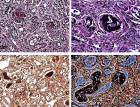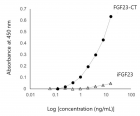About Higher Institute of Medical Techniques of Lubumbashi
Higher Institute of Medical Techniques of Lubumbashi
Articles by Higher Institute of Medical Techniques of Lubumbashi
General practitioners’ knowledge, attitudes and practices on antibiotic prescribing for acute respiratory infections in children in Lubumbashi, Democratic Republic of Congo
Published on: 16th September, 2020
OCLC Number/Unique Identifier: 8701522218
Objective: To assess the knowledge, attitudes and practices declared among general practitioners (GPs) concerning the use of antibiotics for the treatment of ARI in children under 5 years in Lubumbashi.
Methods: A cross-sectional survey was conducted to assess the level of knowledge, attitude and practices concerning antibiotic prescribing among 67 GPs working in the pediatric setting in various health structures in Lubumbashi city, in the Democratic Republic of Congo. Data were collected from April 1st to June 30th, 2020.
Results: GPs had limited knowledge about antibiotic prescriptions (mean of 46% correct answers to 8 questions). Although they are generally concerned about antibiotic resistance (mean ± SD = 0.50 ± 0.68), and are unwilling to submit to pressure to prescribe antibiotics to meet patient demands and expectations (mean ± SD = –1.78 ± 0.31) and the requirements to prescribe antibiotics for fear of losing patients (mean ± SD = –1.67 ± 0.47), there was a lack of motivation to change prescribing practices (mean ± SD = −0.37 ± 0.94) and strong agreement that they themselves should take responsibility for tackling antibiotic resistance (mean ± SD = 1.24 ± 0.74). Multiple linear regression results showed that higher knowledge scores were associated with less avoidance of responsibility when prescribing antibiotics (β = 0.919; p = 0.000).
Conclusion: To curb the over-prescription of antibiotics, it is not enough to improve knowledge in itself. The lack of motivation of physicians to change must be addressed through a systematic approach. These data show the need for interventions that support the rational prescribing of antibiotics.
Visual evoked potentials: Normative values from healthy Senegalese adults
Published on: 11th August, 2020
OCLC Number/Unique Identifier: 8652203971
Introduction: Visual evoked potentials (VEPs) are potential differences recorded on the scalp in response to visual stimulation. They are obtained with slowly repeated stimuli. The aim of this study was to determine the normative values of the visual evoked potentials in our setting.
Methodology: We conducted a cross-sectional study from February 1 to April 30, 2019 at the Clinical Neurophysiology laboratory of the I.P. Ndiaye Clinic at CHNU Fann in Dakar (Senegal).
Results: We found that men had high averages of N75, P100 and N145 wave latencies and low averages of P100 wave amplitude (p>0.05). However, neither age nor body mass index influenced the parameters of VEPs.
Conclusion: Sex is important physiological variable in establishing laboratory normative values for VEPs. There is a marked difference between the sexes for the VEPs parameters.
Epilepsy due to Neurocysticercosis: Analysis of a Hospital Cohort
Published on: 24th September, 2020
OCLC Number/Unique Identifier: 8799421474
Introduction: Neurocysticercosis (NCC) is a common helminthic infection of the nervous system that occurs when humans become intermediate hosts in the life cycle of the pig tapeworm (Taenia solium) after ingesting its eggs. The objective of this study was to analyze socio-demographic, clinical and paraclinical features of patients with NCC in Lubumbashi, DRC.
Methods: This is a cross-sectional study conducted over a period of 2 years within the Neuropsychiatric Center of Lubumbashi. Socio-demographic, clinical, paraclinical and therapeutic features were studied.
Results: A total of 18 patients with NCC were listed. Epilepsy was found in 72.2% (13/18) of the cases. The mean age of the patients was 30.2 ± 13.5 years; males accounted for 61.2% of the cases. 84.6% were consumers of pork. Generalized epilepsy was found in 84.6% of the cases and hypereosinophilia in 38% of the cases. On the neuroimaging, the parietal location of lesions represented 92.3%; calcifications were the type of lesion in 53.8% of the cases and 69.2% of the cases presented lesions in the 4th evolutionary stage. Electroencephalogram was normal in 84.4% of the cases. Phenobarbital was the antiepileptic drug used in 69.3%; albendazole and prednisone were used in 53.9% of the cases.
Conclusion: This study shows that NCC is one of the causes of epilepsy in Lubumbashi. Generalized tonic-clonic seizures are the most common form of presentation and calcified parenchymal lesions are the most common radiological feature of NCC. So, any patient with acute onset of afebrile seizure should be screened for NCC provided other common causes been ruled out.

HSPI: We're glad you're here. Please click "create a new Query" if you are a new visitor to our website and need further information from us.
If you are already a member of our network and need to keep track of any developments regarding a question you have already submitted, click "take me to my Query."
















































































































































